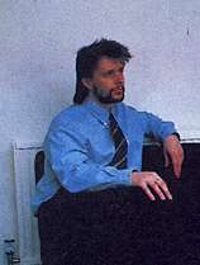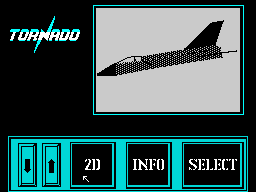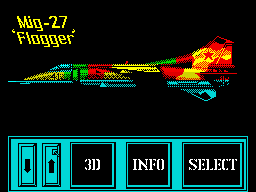
Giant American software house Activision has turned Electric Dreams into a label for all their original products, and one of the top development houses writing for it is Vektor Grafix. CRASH spoke to company founder Andy Craven about his company, and his progress from real-life rock star to top programmer.
Vektor Grafix was formed by two programmers, Andy Craven and Danny Gallagher, who’d never written a computer game before. Andy had in fact started out as a rock musician touring Europe with bands such as SmartAss and The Clients. Usually Andy was lead singer, guitarist and frontman (the person who dealt with hecklers). Some of the best venues for the groups were American and British military bases in Europe, with the music being tailored to fit the audience. For Americans Lynard Skynard was really popular, whereas British audiences preferred Led Zeppelin. At times Andy even stooped to playing covers of Country and Western records! (Remember The Blues Brothers’s ‘Stand By Your Man’?) The main purpose of the bands, though, was to have a god time, travelling around in an old Merc van with a bed in the back (to accommodate female fans, we’re told — such generous people).

Eventually, the hard life of a rock star forever being chased by groupies got to be too much — Andy stopped touring and got married. Being a musician gave Andy lots of spare time at home, between gigs, and that’s how he got interested in computers, first buying a ZX81, then a Spectrum and finally a BBC Micro. Like most programmers he taught himself machine code, and one book he particularly recommends is Programming The Z80 by Rodney Zacs. The worth of his all-night sessions was proved when a friend commented that he’d never get anywhere without proper qualifications, Andy responded with a boast about getting a job teaching people qualifications. It took a few years, but starting off with YTS trainees Andy worked his way up to doing lectures at colleges in Leeds!
It was while doing this that he met up with Danny Gallagher, and Vektor Grafix was born in June 1987. The first employee was Ciaran Gultnieks, a 16-year-old programmer. It was this three-man team which landed the Star Wars contract only a month or so after the company was formed. To start off with such a major project was obviously a stroke of luck but the deadlines were tight — just eight weeks to write the Spectrum, Commodore and BBC Micro conversion. Nevertheless the quality of their Spectrum work earned them 84% with CRASH, and they got The Empire Strikes Back contract as well.
Vektor launched a recruiting drive to expand the company but ironically it was then that Danny Gallagher left (he’s now writing a 3-D game for Ocean). On the positive side a local ad drew in Derrick Austin and Bill Pullan, again complete newcomers to the software industry — Derrick is now a graphic artist, specialising on the Spectrum, and Bill is writing ST/Amiga Bomber. Another recruit was Ian Martin, the programmer of the C64 Ace and Ace 2. When some of The company went to visit Broderbund, the American programming house, Ian spent his three weeks rewriting C64 Star Wars to run faster for the Americans.
As work progressed on Empire John Lewis arrived, taking his place as a company director. Prior to his involvement with The software industry John used [to] work at an advertising agency. He then moved over to being the marketing manager of a software house before finally arriving at Vektor Grafix. When he joined he took over Danny’s 50% share of the company, and has become the business-minded balance to Andy’s more programmer-orientated outlook.
Once completed The Empire Strikes Back won a CRASH Smash for fast wireframe graphics, more involved graphics, more involved gameplay and excellent 128K tunes. Unfortunately the final game in the trilogy had even tighter deadlines, and didn’t use vector graphics. Consult Computer Systems eventually got the contract for Return Of The Jedi, but by that time Andy was already determined to develop a more advanced graphics system. A look around the software market convinced him that solid, rather than wireframe, 3-D was the way to go and the now complete system is claimed to be at least as good as anything else available.
The core of the 3-D system is a series of algorithms, mathematical formulae or flow-charts that can be applied to a host of home computers. One function of the system is that if Andy puts in data for, say, an F-4 Phantom code comes out for whichever machine is required. Once Bomber is completed there’s plans to use the system for several other games — including an all-out arcade game.
But the company is determined not to be limited to only one type of game, and has set up a sub-company called Sprytes Ltd which is developing a similar sort of core system to be used with a wide variety of machines and games. Already Sprytes has the contract for a coin-op conversion from Activision. There’s also Muzik Ltd, which does the same for music and sound FX. And finally there’s a natural language parser under development by Alan Brown, an ex-MoD boffin. Currently his system is said to equal the parser used by adventure masters Infocom, and it’s not finished yet. Vektor hope to hook it up to their 3-D system for something very special in the future.
For the moment Vektor Grafix remain an ambitious new development house, but for the future they harbour plans to set themselves up as an independent publisher. How soon that happens depends in part on the success of Bomber, but from the demos and screenshots we’ve seen they should have no worries.
Fast, incredibly detailed solid 3-D, four different aircraft to fly and fast, realistic but fun combat are the prime components of Electric Dream’s Bomber. The latest flight combat sim to hit the Spectrum is looking very hot...

The most accurate title for Electric Dream’s latest release would be something like Indictor/Strike or Multi-Role Combat Aircraft, but they don’t have quite the same ring as Bomber. Rather than featuring rather slow strategic bombers like the B-52 and ‘Bear’, Electric Dreams have concentrated on multi-role aircraft such as the Tornado, MiG-27, Viggen and F-4.
The idea for the game came to Andy Craven from the Curtis E Le May bombing competition held each year in the States by the USAF’s Strategic Air Command. Allied air forces from around the world are invited to take part in the competition with points awarded for accuracy, tactics and so on. Craven thought it sounded like a ‘very expensive grown-up’s game’ and turned it into a ‘Test Drive of the Skies’ in Bomber, with the Russians allowed in too.

The finished game will be a multiload, with the first load allowing players to select which aircraft they’d like to fly. Each aircraft will have slightly different handling characteristics, plus accurate top speeds, turning circles and such-like. Once an aircraft has been selected it’s into the game proper. To start off with players will have to demonstrate that they’re fit to take part in the competition by making take-offs and landings. Accomplish this and you can go onto missions such as intercepting enemy aircraft and bombing terrorist camps. On all missions you must return to base and land, although if necessary you could prolong a mission by air-to-air refuelling! When you do land you can save your performance as a combat readiness record.
128 owners will be pleased to know they’ll have less loads, and some extra game sequences as well. But whatever machine you have Bomber looks like a very hot program.
[NB Eventually released as Fighter Bomber]